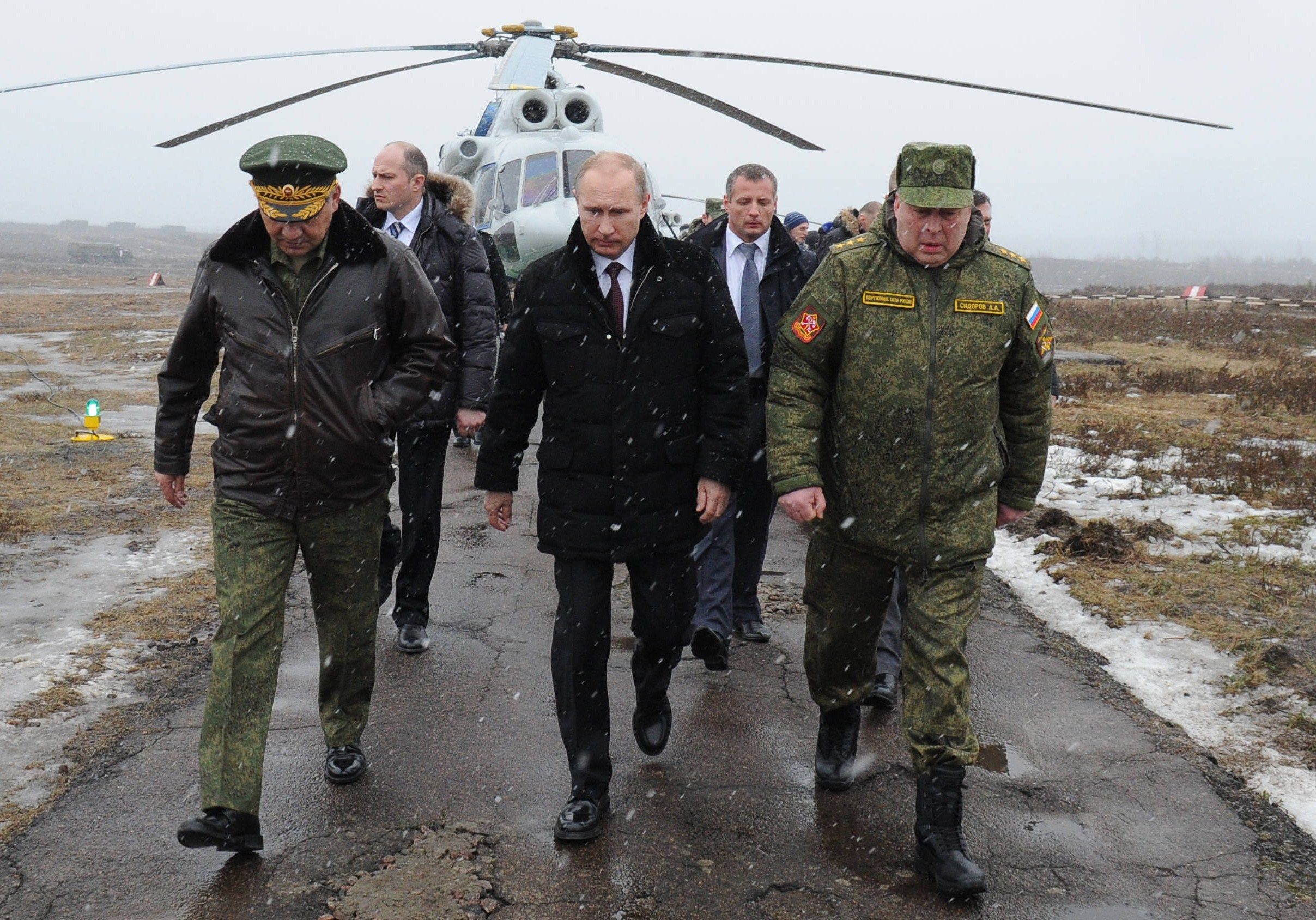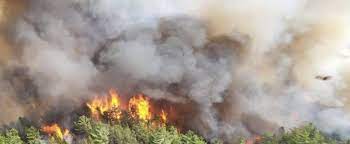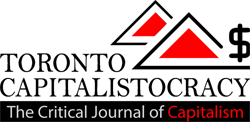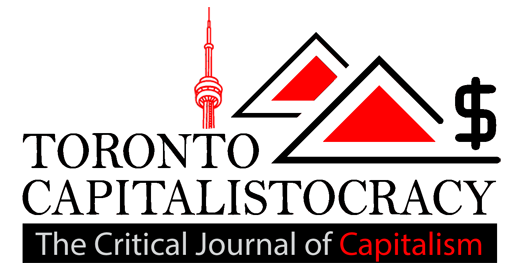Headline News
Opposing Putin’s War on the Environment

Since Vladimir Putin became director of the Federal Security Service (FSB) on July 25, 1998, politics in Russia has been shaped by conflict over environmental policy. The political “opposition” in Russia has lacked coherent principled policy, especially concerning respect for human rights. Indeed, it has been dominated by voices even more anti-democratic than Putin, such as Communist and ultra-nationalist parties.
On the other hand, the democratic part of the opposition is led by the Yabloko Party, which insults Putin’s regime by calling “a Pollutionocracy.”
We must dispel the widespread myth that nothing in the former Soviet Union was positive towards the environment. On the contrary, what Yabloko calls the “Pollutionocracy” is the current rule by billionaire plutocrats who share power with Putin, undermining the environmental protections that were a positive legacy of the Soviet era.
Soviet Protection of Nature
Soviet environmental policies, which emerged in 1917, had much in common with developments at same time in North America, Europe, and the British Empire. In all these states environmental and conservation policies were more advanced in certain sectors than others. At first there was progress in the areas of forest and soil conservation, the establishment of nature reserves, and control over wildlife harvesting. Only much later in the 1950s did significant changes come in thornier areas, such as reducing industrial pollution. Likewise, the nuclear fuel cycle was not curtailed until massive protests in the 1970s and at that same time protests began to call for reducing waste.
To understand the difficulties in the early Soviet Union regarding the environment, it is worth recalling the debate between Emma Goldman and John Reed in the popular Hollywood film Reds. Here the American Communist John Reed responds to Emma Goldman’s ridicule of the incompetent Soviet authorities by expressed hope that eventually, through experience, they would get it right.
Reed’s words were prophetic, although almost 30 years elapsed before they began coming true. The worst period was the terror-famine of the early 1930s when, according to official Soviet census records, the population declined by about five million.
The terror-famine disaster resulted largely from the ecocidal policies of land management in the early Soviet Union, which repudiated the work of Czarist era foresters and agronomists. While adapted to peculiar Russian circumstances, these Czarist measures paralleled trends in Europe in matters of soil and forest conservation.
A sign of beneficial change in Soviet policy appeared in the USSR’s constitution of 1935, termed the “Stalin” constitution. This conciliatory policy toward the population took place in the same year as efforts to eliminate private plots as an important part of Soviet agriculture.
Thereafter, starvation vanished from the Soviet Union, apart from a few years when dust bowls were caused by attempts to grow crops on unsuitable soils in central Asia.
Asian dust bowls were later eliminated through conservationist reforms, such as planting shelter belts of trees and prohibiting cropping on marginal lands. Termed the “Stalin Plan for the Reform of Nature,” it was similar to measures of American President Franklin Roosevelt to reverse dust bowl desertification on the prairies. Both were among the first significant efforts by government to take corrective action against harmful human-induced sources of climate change.
The American environmental historian Stephen Brain has described the important shift in Soviet history through his recent book, Song of the Forest. In this critically acclaimed work Brain sees the cornerstone of successful “Stalinist environmentalism” as the passage of Decree 430 only weeks after the 1943 Battle of Stalingrad. It protected all the forests of European Russia and restricted large scale logging to Siberia.
The protection of the forests of European Russia was part of a broader strategy in the Soviet Union to promote social stability and peace with good land planning and efficient transit. A greenbelt was established around Moscow. While in rural areas, shelter belts stopped the dust bowl, in urban areas forests helped filter industrial pollutants and cool cities. Planning, trees, good transit, and forests made life in the Soviet Union more liveable.
Hans Blumenfeld, one of the figures who shaped mature Soviet environmental policies, later came to Toronto, where he applied them in the 1950s. During these years. with his encouragement, Toronto’s ravines were protected as a vital “Inner Greenbelt.”
The basic Communist environmental reforms survived in Russia under President Boris Yeltsin. Although moving to a market economy in other areas, he kept the Moscow Greenbelt and the protection of European forests through competent dedicated foresters. Yeltsin’s science advisor was a close friend of Mikhail Gorbachev, Alexei Yablokov, who managed to put an end to Soviet whaling.
Putin’s Pollutionocracy
As soon as he became FSB director, Putin began to show tendencies toward Pollutionocracy. During this time Amnesty International designated its first “prisoner of conscience” since the Soviet era had ended eight years earlier. The victim was Aleksandr Nikitin, who documented the polluting radioactive impacts of Russia’s Northern Fleet, using only public sources.
Putin turned Russia’s billionaire oligarchy into a Pollutionocracy, booting out of the billionaires club a critical funder of Yabloko, Vladimir Gusinskiy, and promoting Yevgeny Nazdratenko to be governor of Far Eastern Siberia. Nazdratenko headed a lucrative network of timber smuggling and ignited a local energy crisis that caused hospitals to fill with frostbite victims. Putin promoted him first to be head of Russian fisheries and then deputy secretary of Russia’s Security Council. Here he was put in charge of environmental security protecting biological resources—the fox in charge of the henhouse. Yabloko called this typical of the “predatory use of natural resources…by top officials.”
The key assault on the legacy of Soviet era environmentalism by Putin and the resulting provoking of an environmental backlash was the repeal of both the protection of European forests and the disbanding of the Russian forest service in 2007. Yabloko later denounced what it termed the “liquidation of the city and countryside recreational zones.” One immediate consequence was the decision by many Russian ecologists, led by the persecuted Nikitin, to create an ecological protection section of Yabloko. It is called “Green Russia“and led by Yablokov, who serves as the section’s representative on Yabloko’s executive.
While initially drawing little comment, the repeal of forest conservation laws in 2007 soon had an impact: a burst of tree cutting, not only in isolated nature reserves, but in urban parks and botanical gardens. The motivation for the repeal of the ban soon became seen around Moscow. Subdivisions exploded on lands formerly protected by the greenbelt. Rural land developers had made an alliance with Putin.
One of the consequences of the end of forest protection in European Russia was to give Yabloko a new political base—activists opposing urban sprawl. While Yabloko has not been represented in the Russian Duma since 2003, it has been able to elect municipal councillors and state legislators. Its strongest representation is in St. Petersburg, where the party’s founder, Gregory Yavlinsky, and another party executive member, Mikhail Amosov, are legislators. Part of the focus of the party in St. Petersburg is urban planning. Amosov chairs the city’s planning committee.
The end of forest protection launched a struggle in Khimki, a suburb of Moscow, where a campaign erupted in 2008 to protect a 150-hectare forest from a proposed expressway. An important ally of Putin connected to the expressway is his current judo partner and friend since his teenage years, Arkadiy Rotenberg. According to Karen Dawisha’s book, Putin’s Kleptocracy, Rotenberg is one of Russia’s richest men, with a net worth of $4 billion.
Before the 2013 protests against election corruption, the struggle to save the forest was the biggest popular campaign in Russia, involving marches and a camping occupation of the threatened lands. The leader of the protests, Yevgenia Chirikova, ran unsuccessfully to become mayor of Khimki on the Yabloko ticket. She fled to Estonia in 2015.
Two journalists involved in the campaign to save the Khimki forest, Konstantine Fetisov and Mikhail Beketov, were beaten by thugs and confined to wheelchairs as a result. On April 13, 2013 Beketov died.
In response to Beketov’s death, the current leader of Yabloko—a former Moscow City Councillor whose political base is in the movement to protect the Moscow Greenbelt—gave an eulogy. Sergei Mitrokhin charged that “investigators know the names of those who ordered the crime but allude to lack of evidence. The tragedy lies in the fact that our current rulers are not only corrupt, but openly criminal. Mikhail has become a symbol of an obstacle in their path. He tried almost single-handedly to fight the system and it killed him.”
One heroic figure in Yabloko struggling to protect the environment is a geologist, Yevgeny Vitishko. He has been recognized by Amnesty International as a prisoner of conscience and is serving a three-year sentence in a penal colony for graffiti protest. One of his campaigns was to oppose the building of a dacha for the Governor of Kransnodar in an environmental protection zone. Another was against the construction of a dump in Sochi National Park on a formerly forested slope where stripping of trees triggered a landslide.
It is important to recognize that there is a democratic opposition focused on the protection of the environment from the Putin regime which has endured despite 17 years of persecution. Canadians should support it.
John Bacher is an environmental and peace activist living in St. Catherines and Toronto, Ontario.
Headline News
How Canadian churches are helping their communities cope with the wildfires

As wildfires burn across Canada, churches are finding ways to support their members and the broader community directly impacted by the crisis.
According to the Canadian Interagency Forest Fire Centre, as of June 13, there are 462 active fires across Canada – and 236 of them classified as out of control fires.
Whether it’s through phone calls or donations to community members, here’s how a few churches across Canada are handling active wildfires and the aftermath in their regions.
Westwood Hills, N.S.: St. Nicholas Anglican Church
In Nova Scotia, St. Nicholas Anglican Church and other churches in the area are collecting money for grocery cards to give to families impacted by the Tantallon wildfire.
Right outside of Halifax, N.S., the Tantallon wildfire destroyed 151 homes. More than 16,000 people evacuated the area due to the fire.
The fire is now considered contained, but Tanya Moxley, the treasurer at St. Nicholas is organizing efforts to get grocery gift cards into the hands of impacted families.
As of June 12, four churches in the area – St. Nicholas, Parish of French Village, St Margaret of Scotland and St John the Evangelist – raised nearly $3,500. The money will be split for families’ groceries between five schools in the area impacted by the wildfire.
Moxley said she felt driven to raise this money after she heard the principal of her child’s school was using his own money to buy groceries for impacted families in their area.
“[For] most of those people who were evacuated, the power was off in their subdivision for three, four or five days,” she said. “Even though they went home and their house was still standing, the power was off and they lost all their groceries.”
Moxley said many people in the area are still “reeling” from the fires. She said the church has an important role to help community members during this time.
“We’re called to feed the hungry and clothe the naked and house the homeless and all that stuff, right? So this is it. This is like where the rubber hits the road.”

Headline News
Is it ever OK to steal from a grocery store?

Mythologized in the legend of Robin Hood and lyricized in Les Misérables, it’s a debate as old as time: is it ever permissible to steal food? And if so, under what conditions? Now, amid Canada’s affordability crisis, the dilemma has extended beyond theatrical debate and into grocery stores.
Although the idea that theft is wrong is both a legally enshrined and socially accepted norm, the price of groceries can also feel criminally high to some — industry data shows that grocery stores can lose between $2,000 and $5,000 a week on average from theft. According to Statistics Canada, most grocery item price increases surged by double digits between 2021 and 2022. To no one’s surprise, grocery store theft is reportedly on the rise as a result. And if recent coverage of the issue rings true, some Canadians don’t feel bad about shoplifting. But should they?
Kieran Oberman, an associate professor of philosophy at the London School of Economics and Political Science in the United Kingdom, coined the term “re-distributive theft” in his 2012 paper “Is Theft Wrong?” In simplest terms, redistributive theft is based on the idea that people with too little could ethically take from those who have too much.
“Everybody, when they think about it, accepts that theft is sometimes permissible if you make the case extreme enough,” Oberman tells me over Zoom. “The question is, when exactly is it permissible?”
Almost no one, Oberman argues, believes the current distribution of wealth across the world is just. We have an inkling that theft is bad, but that inequality is too. As more and more Canadians feel the pinch of inflation, grocery store heirs accumulate riches — Loblaw chair and president Galen Weston, for instance, received a 55 percent boost in compensation in 2022, taking in around $8.4 million for the year. Should someone struggling with rising prices feel guilty when they, say, “forget” to scan a bundle of zucchini?

Headline News
The homeless refugee crisis in Toronto illustrates Canada’s broken promises

UPDATE 07/18/2023: A coalition of groups arranged a bus to relocate refugees to temporarily stay at a North York church on Monday evening, according to CBC, CP24 and Toronto Star reports.
Canadians live in a time of threadbare morality. Nowhere is this more obvious than in Toronto’s entertainment district, where partygoers delight in spending disposable income while skirting refugees sleeping on sidewalks. The growing pile of luggage at the downtown corner of Peter and Richmond streets resembles the lost baggage section at Pearson airport but is the broken-hearted terminus at the centre of a cruel city.
At the crux of a refugee funding war between the municipal and federal governments are those who have fled persecution for the promise of Canada’s protection. Until June 1, asylum seekers used to arrive at the airport and be sent to Toronto’s Streets to Homes Referral Assessment Centre at 129 Peter St. in search of shelter beds. Now, Toronto’s overcrowded shelter system is closed to these newcomers, so they sleep on the street.
New mayor Olivia Chow pushed the federal government Wednesday for at least $160 million to cope with the surge of refugees in the shelter system. She rightly highlights that refugees are a federal responsibility. In response, the department of Immigration, Refugees, and Citizenship Canada points to hundreds of millions in dollars already allocated to cities across Canada through the Interim Housing Assistance Program, while Ontario says it has given nearly $100 million to organizations that support refugees. But these efforts are simply not enough to deliver on Canada’s benevolent promise to the world’s most vulnerable.
The lack of federal generosity and finger-pointing by the city has orchestrated a moral crisis. It’s reminiscent of the crisis south of the border, where Texas governor Greg Abbott keeps bussing migrants to cities located in northern Democratic states. Without the necessary resources, information, and sometimes the language skills needed to navigate the bureaucratic mazes, those who fled turbulent homelands for Canada have become political pawns.
But Torontonians haven’t always been this callous.
In Ireland Park, at Lake Ontario’s edge, five statues of gaunt and grateful refugees gaze at their new home: Toronto circa 1847. These statues honour a time when Toronto, with a population of only 20,000 people, welcomed 38,500 famine-stricken migrants from Ireland. It paralleled the “Come From Away” event of 9/11 in Gander, N.L., where the population doubled overnight, and the people discovered there was indeed more than enough for all. It was a time when the city lived up to its moniker as “Toronto, The Good.”
Now, as a wealthy city of three million people, the city’s residents are tasked with supporting far fewer newcomers. Can we not recognize the absurdity in claiming scarcity?

-

 Lifestyle8 months ago
Lifestyle8 months agoOntario Line subway construction permanently shuts down beloved Toronto bakery
-

 Business8 months ago
Business8 months agoThe Canadian Armed Forces are hiring for several non-combat military jobs
-

 Business8 months ago
Business8 months agoPorter’s new loyalty program promises to match Air Canada’s Aeroplan status
-

 Business8 months ago
Business8 months agoPeople call out Sobeys for ridiculous prices after another expensive find at Ontario store
-

 Business8 months ago
Business8 months ago‘Here, everything feels much closer’: Entrepreneur says leaving Toronto for Innisfil good for business
-

 Lifestyle8 months ago
Lifestyle8 months agoWoman crashes car and runs around highway with bottle of booze on typical day in Toronto
-

 Lifestyle8 months ago
Lifestyle8 months agoCanada considers capping international student visas to address housing crisis
-

 Business8 months ago
Business8 months agoBeauty Week is back at Hudson’s Bay in Toronto and it’s time to get glam



